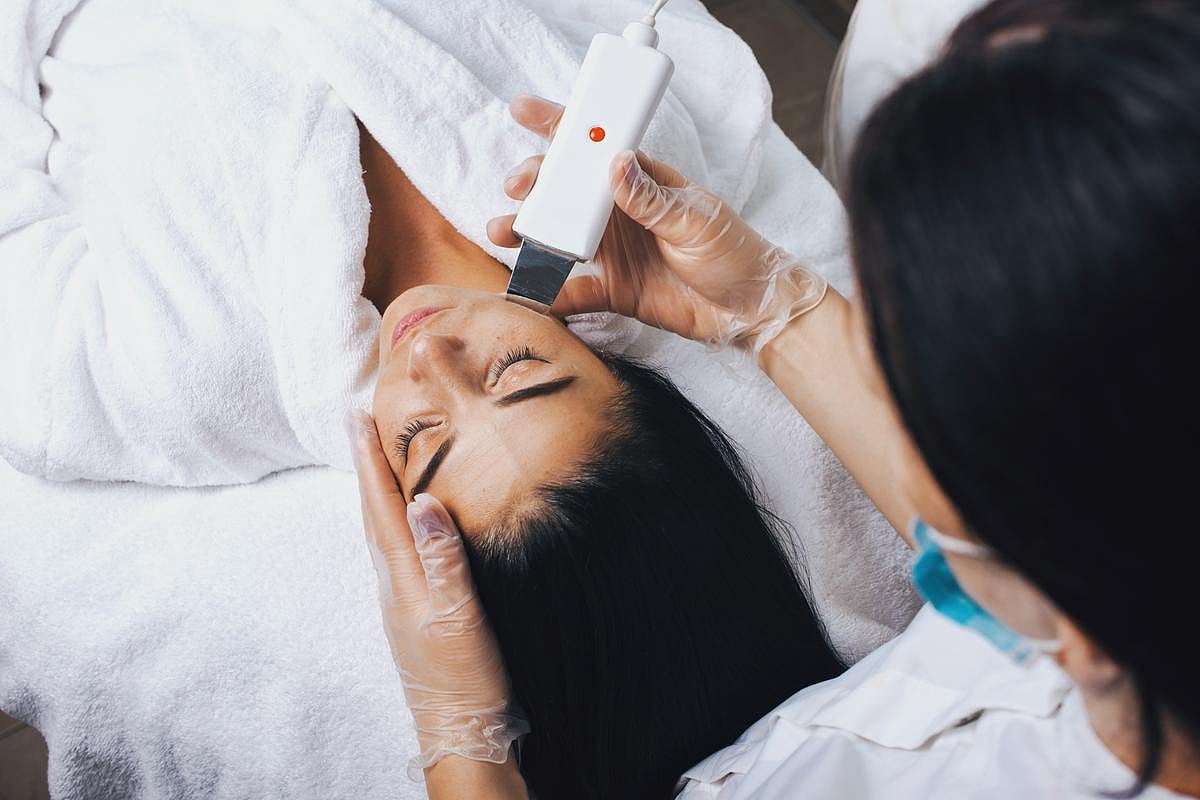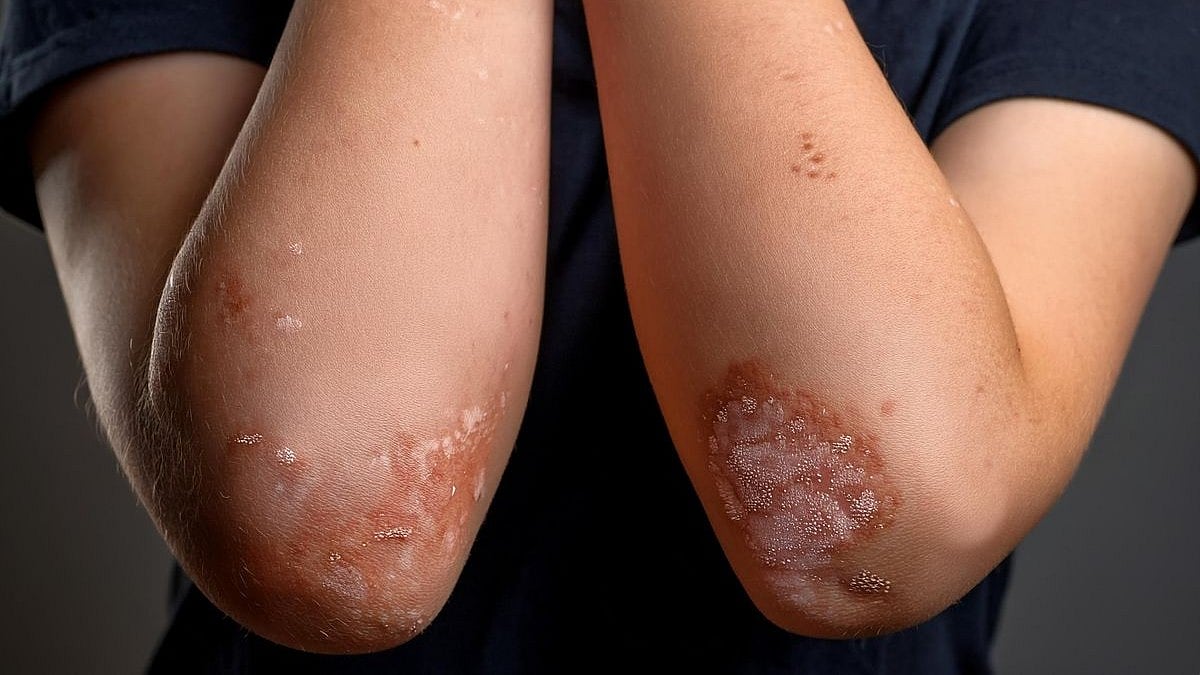As an inflammatory dermatological disorder, hidradenitis suppurativa (HS) can occur in an any area containing folliculo-pilo-sebaceous units (FPSUs) and the predominant region of involvement are the intertriginous skin area such as axillary, groin, anogenital and inframammary regions, as well as other sites prone to friction 1, 2. Incidence of HS varies across different countries, age groups, and genders, with prevalence estimates ranging from less than 1% to 4% 3. Most research identifies females and individuals aged 18 to 29 years as common demographic groups being affected 4. Chronic follicular occlusion further leads to deep-seated inflamed nodule, skin tunnels, open comedones and scar formation 2. The pathogenesis of HS remains incompletely understood; however, it is recognized as a multifactorial condition influenced by various factors, including genetic susceptibility, androgen levels, local immune responses, the composition of the skin microflora, smoking status, and obesity 2, 5–10.
Polycystic ovary syndrome (PCOS) is a heterogenous disorder that involves both endocrine and metabolic aspects in women of reproductive age, and the global prevalence of PCOS has been calculated to be 9.2 % based on a recent meta-analysis 11. Factors involved in the pathogenesis of PCOS includes genetics, elevated luteinizing hormone (LH) levels, obesity, and hyperinsulinemia 12.
The relationship between PCOS and HS has been explored in recent studies 13. The two diseases share certain commonalities, both associated with insulin resistance in pathogenesis and the effectiveness of anti-androgenic drugs in disease management 12, 14, 15. A US-based cross-sectional study reported that people with HS were more than twice as likely to have previous PCOS history 7. Although real-world association has been reported in previous studies, it is still uncertain whether individuals with PCOS are at a higher risk of developing HS. Evidences based on large-scale and longitudinal study that includes more intensive covariates such as age, demographic variables, and BMI levels for PCOS in patients with HS is needed. With further evidence evaluating the real-world association between PCOS and HS, early screening for PCOS comorbidities can be more effectively implemented. The objective of our study is to evaluate the risk of HS development in a large US-based cohort of PCOS patients by comparing them with matched control subjects.
Methods and Materials
This real-world study was performed in a retrospective cohort design. Study population was extracted from the TriNetX research network. TriNetX is a global database with de-identified access of patients’ electronic health records in the collaborative healthcare organizations (HCOs). We utilized the US collaborative network in TriNetX, which focused on population in the United States. It contains data from more than 60 HCOs across the United States and covers more than 80 million patients. This dataset has been frequently used in epidemiological research across multiple clinical disciplines 16.
Female patients aged over 18, with at least two recorded medical visits between January 2005 and December 2017, were selected for further analysis. Among these patients, those diagnosed with polycystic ovary syndrome (PCOS) were categorized into the PCOS cohort. Eligible PCOS cases were identified as patients with greater or equal than two visit records and a documented diagnosis using the International Classification of Diseases, Tenth Revision, Clinical Modification (ICD-10-CM) code E28.2. Those without a prior PCOS diagnosis before the index date were assigned to the healthy control group. Both cohorts excluded any individuals who had a history of hidradenitis suppurativa before the index date or had been diagnosed with any form of cancer, as they were not eligible for further analysis.
All analyses were conducted in the TriNetX analytic platform. In this study, descriptive statistics were used to summarize baseline characteristics of the participants. Continuous variables, such as age at index, were presented as mean ± standard deviation (SD), while categorical variables, including race, comorbidities (e.g., diabetes mellitus, hypertension, hyperlipidemia), socioeconomic status, lifestyle factors (e.g., alcohol dependence, smoking, substance use), medical utilization status, and laboratory data (e.g., body mass index [BMI], C-reactive protein [CRP] levels), were reported as frequencies and percentages (%). To assess differences between the PCOS cohort and the control cohort, standardized mean differences (SMDs) were calculated, with values greater than 0.1 considered indicative of a meaningful imbalance. Furthermore, propensity score matching (PSM) was applied to balance covariates between the two cohorts, adjusting for factors such as age, race, BMI, comorbidities, smoking status, substance use, medical utilization, socioeconomic status, and inflammation-related biomarkers. Information of used administrative codes is depicted in detail in Table S1. Each matching instance used a greedy-nearest neighbor method with a caliper width of 0.1. Hazard ratios (HR) were calculated with 95 confidence intervals (95% CI) to evaluate significance of results.
We conducted various sensitivity analyses to assess internal validity. These analyses involved variations in matching criteria, duration of follow-up (5,10 and 15 years after index date), wash-out periods (12,24 and 36 months) and claim-based algorithms (PCOS definition based on inpatient record and frequently used PCOS medications). Additionally, to further examine the impact of hidradenitis suppurativa in PCOS patients, we conducted stratified analyses based on age groups, body mass index (BMI), and the presence of diabetes mellitus.
The TriNetX database was initially approved by the Western Institutional Review Board (Western IRB). In December 2020, a determination made by a qualified expert, as outlined in Section §164.514(b)(1) of the HIPAA Privacy Rule, regarding the de-identification process removed the need for IRB approval in studies utilizing TriNetX.
Results
Baseline characteristics of the study subjects
We evaluated data from 141,661 patients diagnosed with PCOS and an equal number of 141,661 matched controls without PCOS (Figure 1). Table 1 shows the demographic details, comorbidities, socioeconomic factors, lifestyle habits, medical utilization, and lab results for both groups before and after propensity-score matching. Following matching, the PCOS and control groups had similar characteristics, including age, race, comorbidities, lifestyle, socioeconomic status, medical utilization, and laboratory data. The average age of matched participants was 28.4±8.9 years in the PCOS group and 28.5±9.0 years in the control group, with the majority being Caucasian (64.3% in both cohorts).







Leave a Reply